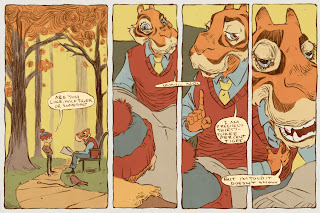FANART FRIDAY: TAIYO MATUSMOTO


This is how I came to know Taiyo Matsumoto:
When I was sixteen, in Hattiesburg, Mississippi, the Books-A-Million was the place to BE. It had snacks, coffee, more books than any of us could ever read, and was open 'till the obscenely late hour of 11pm, my then curfew. Angsty clots of my peers hung out in front of the store until closing, clad in punker and thrift-store goth regalia. It was where the conspicuously unhappy went to see and be seen.
I'd go, chat up the peeps, pay my respects to the tragic teen royalty out front... and then it was BUSINESS TIME. I read every art book, graphic novel, tankobon, and trade paperback on the shelves. Multiple times. And I bought as many as my minimum-wage job pushing popcorn at the local movie theatre could provide me. It was great. I'd show up with friends at around seven, or by myself after work, and read comics sitting on the floor 'till closing time.
It's still my idea of a good time.
In my uniform white shirt and bowtie in a mega-chain bookstore, I met Neil Gaiman, Nate Powell, Adrian Tomine, Chris Ware, Jack Kirby, Kevin Huizenga, Katsuhiro Otomo, Tite Kubo, and Taiyo Matsumoto.
I found Matsumoto's No. 5 on the bookshelf one night at around ten-thirty. I read it cover to cover, was thoroughly amazed by it's contents, but found myself low on funds. I'm terrible at managing my money. Still. Anyway, by the time I came back with enough cash to bring home the most original comic I had ever read in my entire life...
it was gone.
I couldn't remember the name of the comic or the artist, and didn't chance into any Matsumoto work again until, seven years later, I rented Tekkonkinkreet from Blockbuster on a whim. It was the same bizarre, surreal, wholly unique experience I'd had on the blue carpet in Books-A-Million. That time I wrote down the name.
Color in Comicsology

THIS IS ONLY A TEST





UTTERLY UNUSEABLE





ABORTION


















